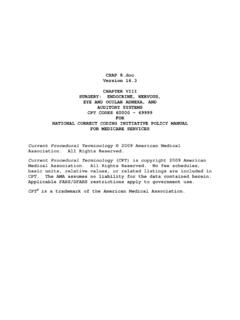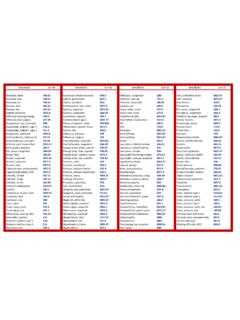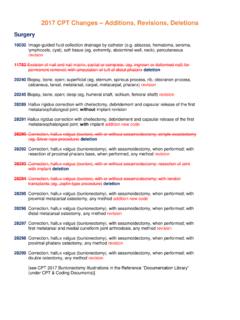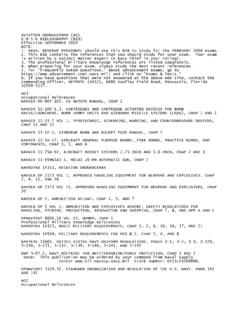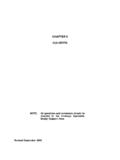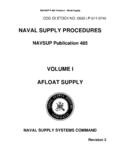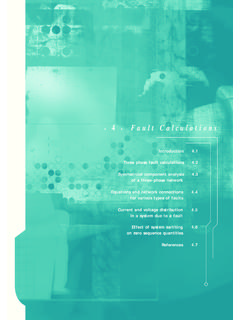Transcription of CHAP 3.doc Version 16.3 CHAPTER III SURGERY: …
1 CHAP Version CHAPTER III SURGERY: INTEGUMENTARY SYSTEM CPT CODES 10000-19999 FOR NATIONAL CORRECT CODING INITIATIVE POLICY MANUAL FOR MEDICARE SERVICES Current Procedural Terminology 2009 American Medical Association. All Rights Reserved. Current Procedural Terminology (CPT) is copyright 2009 American Medical Association. All Rights Reserved. No fee schedules, basic units, relative values, or related listings are included in CPT. The AMA assumes no liability for the data contained herein. Applicable FARS/DFARS restrictions apply to government use. CPT is a trademark of the American Medical Association.
2 Version III-1 CHAPTER III Surgery: Integumentary System CPT Codes 10000 - 19999 A. Introduction The principles of correct coding discussed in CHAPTER I apply to the CPT codes in the range 10000-19999. Several general guidelines are repeated in this CHAPTER . However, those general guidelines from CHAPTER I not discussed in this CHAPTER are nonetheless applicable. Physicians should report the HCPCS/CPT code that describes the procedure performed to the greatest specificity possible. A HCPCS/CPT code should be reported only if all services described by the code are performed. A physician should not report multiple HCPCS/CPT codes if a single HCPCS/CPT code exists that describes the services.
3 This type of unbundling is incorrect coding. HCPCS/CPT codes include all services usually performed as part of the procedure as a standard of medical/surgical practice. A physician should not separately report these services simply because HCPCS/CPT codes exist for them. Specific issues unique to this section of CPT are clarified in this CHAPTER . B. Evaluation and Management (E&M) Services Medicare Global Surgery Rules define the rules for reporting evaluation and management (E&M) services with procedures covered by these rules. This section summarizes some of the rules. All procedures on the Medicare Physician Fee Schedule are assigned a Global period of 000, 010, 090, XXX, YYY, or ZZZ.
4 The global concept does not apply to XXX procedures. The global period for YYY procedures is defined by the Carrier (A/B MAC processing practitioner service claims). All procedures with a global period of ZZZ are related to another procedure, and the applicable global period for the ZZZ code is determined by the related procedure. Since NCCI edits are applied to same day services by the same provider to the same beneficiary, certain Global Surgery Rules are applicable to NCCI. An E&M service is separately reportable Version III-2 on the same date of service as a procedure with a global period of 000, 010, or 090 under limited circumstances.
5 If a procedure has a global period of 090 days, it is defined as a major surgical procedure. If an E&M is performed on the same date of service as a major surgical procedure for the purpose of deciding whether to perform this surgical procedure, the E&M service is separately reportable with modifier 57. Other E&M services on the same date of service as a major surgical procedure are included in the global payment for the procedure and are not separately reportable. NCCI does not contain edits based on this rule because Medicare Carriers have separate edits. If a procedure has a global period of 000 or 010 days, it is defined as a minor surgical procedure.
6 The decision to perform a minor surgical procedure is included in the payment for the minor surgical procedure and should not be reported separately as an E&M service. However, a significant and separately identifiable E&M service unrelated to the decision to perform the minor surgical procedure is separately reportable with modifier 25. The E&M service and minor surgical procedure do not require different diagnoses. If a minor surgical procedure is performed on a new patient, the same rules for reporting E&M services apply. The fact that the patient is new to the provider is not sufficient alone to justify reporting an E&M service on the same date of service as a minor surgical procedure.
7 NCCI does contain some edits based on these principles, but the Medicare Carriers have separate edits. Neither the NCCI nor Carriers have all possible edits based on these principles. Example: If a physician determines that a new patient with head trauma requires sutures, confirms the allergy and immunization status, obtains informed consent, and performs the repair, an E&M service is not separately reportable. However, if the physician also performs a medically reasonable and necessary full neurological examination, an E&M service may be separately reportable. Procedures with a global surgery indicator of XXX are not covered by these rules.
8 Many of these XXX procedures are performed by physicians and have inherent pre-procedure, intra-procedure, and post-procedure work usually performed each time the procedure is completed. This work should never be reported as a separate E&M code. Other XXX procedures are not usually performed by a physician and have no physician work relative value units associated with them. A physician should never report a separate E&M code with these procedures for the supervision of others performing the procedure or for the Version III-3 interpretation of the procedure. With most XXX procedures, the physician may, however, perform a significant and separately identifiable E&M service on the same date of service which may be reported by appending modifier 25 to the E&M code.
9 This E&M service may be related to the same diagnosis necessitating performance of the XXX procedure but cannot include any work inherent in the XXX procedure, supervision of others performing the XXX procedure, or time for interpreting the result of the XXX procedure. Appending modifier 25 to a significant, separately identifiable E&M service when performed on the same date of service as an XXX procedure is correct coding. C. Anesthesia With limited exceptions Medicare Anesthesia Rules prevent separate payment for anesthesia for a medical or surgical procedure when provided by the physician performing the procedure.
10 The physician should not report CPT codes 00100-01999 or 64400-64530 for anesthesia for a procedure. Additionally, the physician should not unbundle the anesthesia procedure and report component codes individually. For example, introduction of a needle or intracatheter into a vein (CPT code 36000), venipuncture (CPT code 36410), drug administration (CPT codes 96360-96376) or cardiac assessment ( , CPT codes 93000-93010, 93040-93042) should not be reported when these procedures are related to the delivery of an anesthetic agent. Medicare allows separate reporting for moderate conscious sedation services (CPT codes 99143-99145) when provided by the same physician performing a medical or surgical procedure except for those procedures listed in Appendix G of the CPT Manual.
